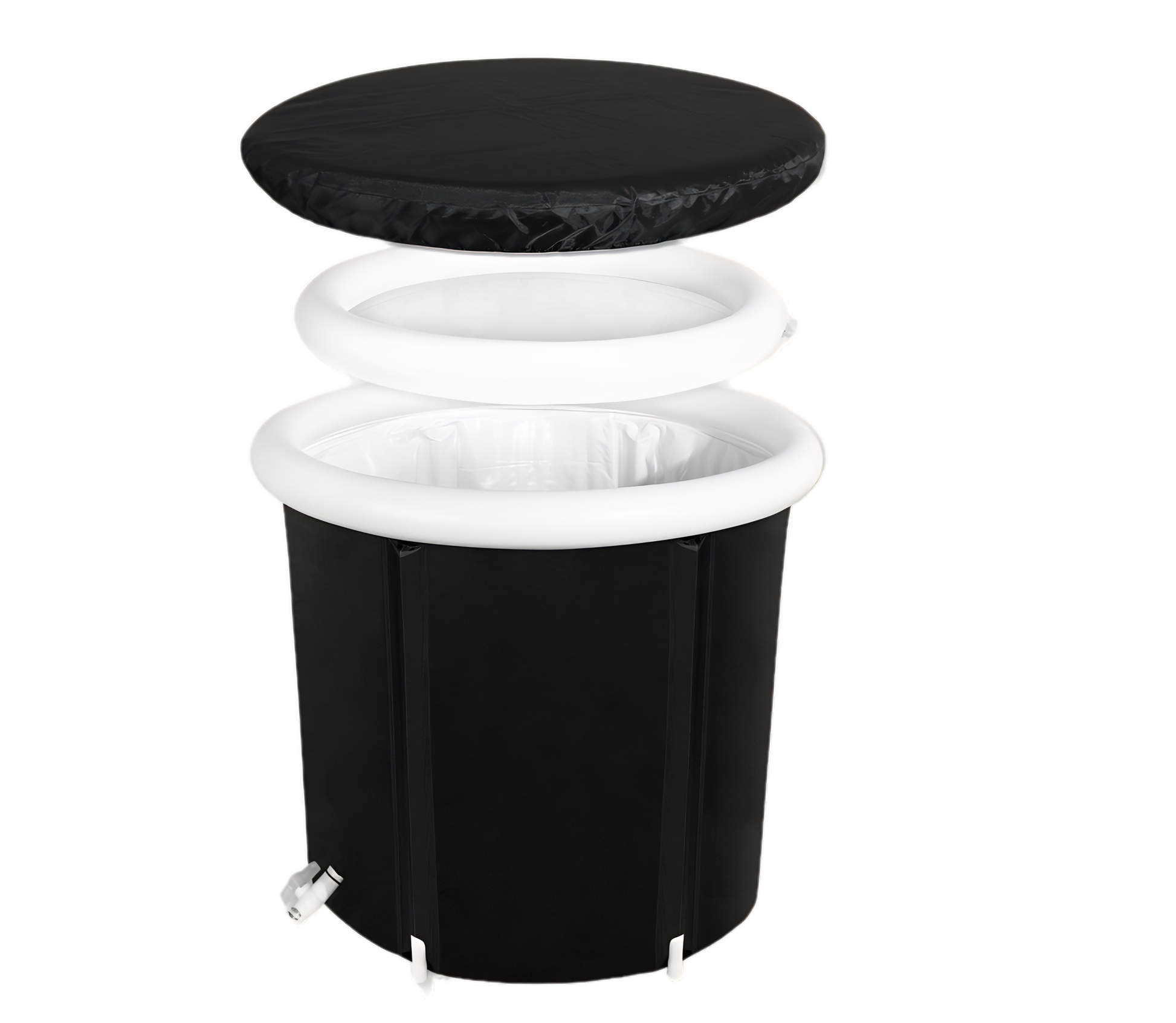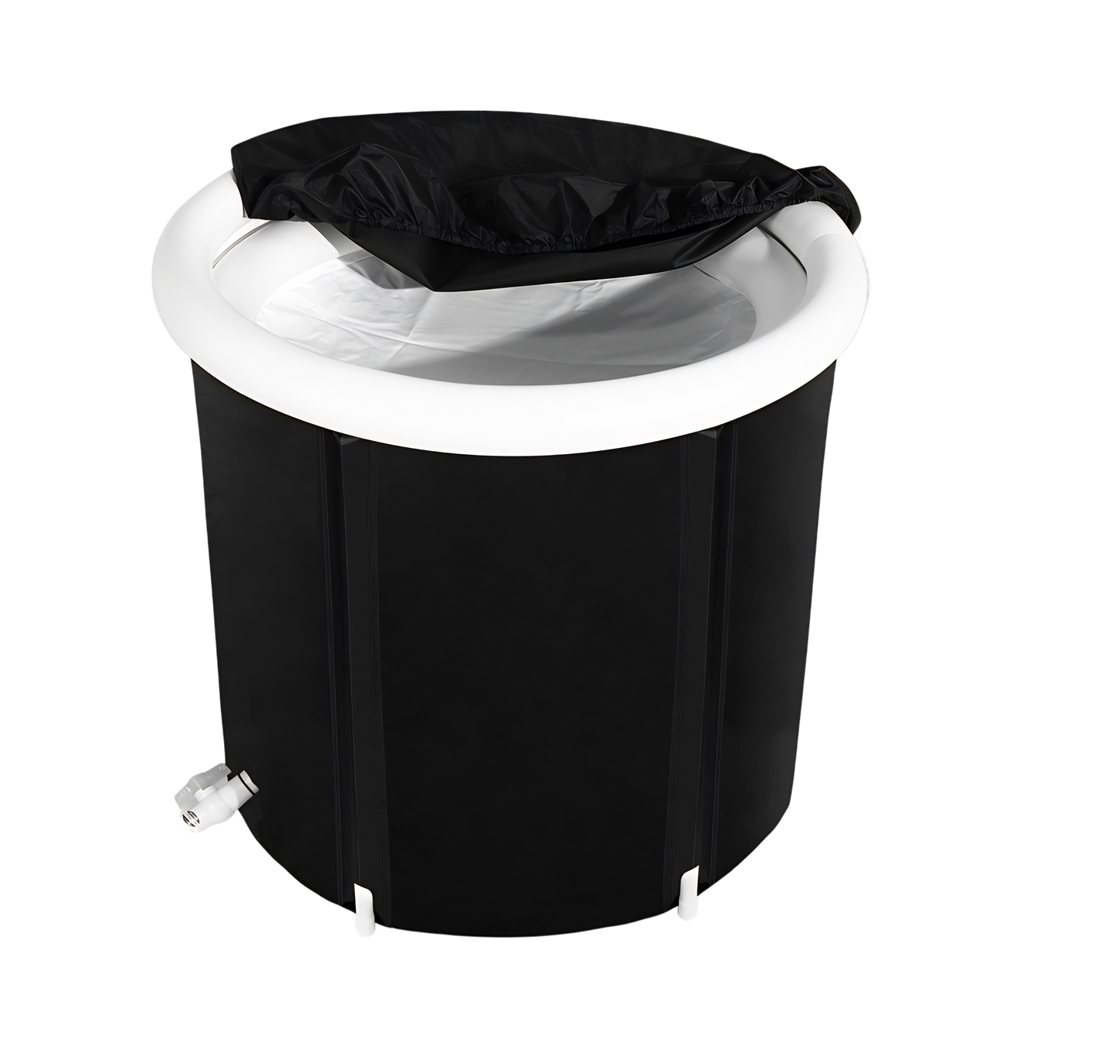Ice baths, also known as cold water immersion (CWI), have gained popularity as a method to reduce post-exercise muscle stiffness, eliminate fatigue, and promote muscle recovery.
A systematic review and meta-analysis of 20 studies found that ice baths significantly decrease delayed-onset muscle soreness (DOMS) and ratings of perceived exertion (RPE) immediately after exercise. Ice baths also reduce countermovement jump (CMJ) performance at 0 hours and lower creatine kinase (CK) levels at 24 hours. However, there was no evidence that ice baths affect C-reactive protein (CRP) and IL-6 levels during a 48-hour recovery period. Different temperatures and body parts submerged in cold water did not have a significant impact on post-exercise fatigue recovery. Overall, immersing in cold water immediately after exercise can effectively reduce muscle soreness and accelerate fatigue recovery.
Key Takeaways:
- Ice baths are a popular method for reducing muscle soreness and promoting recovery.
- Studies have shown that ice baths significantly decrease delayed-onset muscle soreness and perceived exertion after exercise.
- Different temperatures and body parts submerged in cold water do not significantly affect post-exercise fatigue recovery.
- Ice baths work by inducing vasoconstriction and flushing out metabolic waste, reducing inflammation and promoting healing.
- Integrating ice baths into a post-exercise routine can lead to faster recovery, decreased muscle soreness, and improved overall well-being.
The Science Behind Ice Baths: Cooling and Warming
Understanding the science behind ice baths is crucial to harnessing their benefits for muscle recovery and soreness treatment. Ice baths, also known as cold water immersion (CWI), work by utilizing the principles of cooling and warming to enhance the body's natural healing processes.
When you immerse your body in cold water, ice baths induce vasoconstriction, which is the narrowing of blood vessels. This reduction in blood flow to the muscles helps flush out metabolic waste and decrease inflammation, thereby alleviating muscle soreness. Additionally, the cold temperatures lower nerve conduction velocity, reducing pain sensations in the muscles.
As the body rewarms after the ice bath, blood flow increases, causing vasodilation or the dilation of blood vessels. This dilation allows for improved circulation, delivering oxygen and nutrients to the muscles, essential for their recovery. The cycle of vasoconstriction and vasodilation created by ice baths helps accelerate the healing process and promotes muscle repair.
"Ice baths activate brown fat cells, which generate heat through thermogenesis, contributing to the warming process and aiding in muscle recovery." - Dr. Jane Tesseler, Sports Medicine Expert
Furthermore, the exposure to cold temperatures in ice baths stimulates the metabolic rate and increases the production of heat in the body temporarily. This metabolic response helps generate warmth, improving blood flow and promoting overall recovery after intense physical activity.
The Benefits of Cold Therapy
Cold therapy, such as ice baths, offers several benefits for muscle recovery and soreness treatment. By decreasing inflammation and relieving pain, ice baths effectively reduce muscle soreness. The vasoconstriction caused by cold water immersion minimizes inflammation in the worked muscles, providing relief and aiding in the recovery process.
In addition to reducing soreness, ice baths promote active recovery by enhancing blood circulation. The increased circulation helps remove toxins and metabolic waste from the muscles, further aiding in the recovery process. By immersing in an ice bath, athletes can experience faster recovery times, decreased muscle soreness, and improved overall well-being.
| Benefits of Ice Baths for Recovery | Cold Therapy Techniques |
|---|---|
| Reduces inflammation and muscle soreness | Cold water immersion (CWI) |
| Promotes muscle repair and accelerates healing | Cold compresses |
| Enhances blood circulation and removal of metabolic waste | Cryotherapy |
| Alleviates pain sensations in muscles | Cold showers |
Incorporating ice baths into a post-exercise routine can greatly benefit athletes and fitness enthusiasts. However, it is important to consult a healthcare professional before incorporating any new recovery techniques or cold therapy practices to ensure they align with individual needs and goals.
The Benefits of Ice Baths for Recovery

Integrating ice baths into your post-workout routine can have numerous benefits for muscle recovery and overall well-being. Frozen immersion not only aids in reducing muscle soreness but also promotes faster recovery.
One of the key advantages of ice baths is their ability to decrease inflammation and relieve pain. The cold temperatures of the water cause vasoconstriction, which reduces blood flow and minimizes inflammation in the worked muscles.
Stepping out of the ice bath triggers vasodilation, enabling fresh, oxygen-rich blood to flow into the muscles and promote healing. This increased circulation facilitates the removal of toxins and metabolic waste, aiding in active recovery.
By incorporating ice baths into your recovery routine, you can experience reduced muscle soreness, faster recovery, and an overall improvement in your body's well-being. Cold therapy has proven to be an effective method for enhancing the recovery process and optimizing muscle repair.
FAQ
How do ice baths work to reduce muscle soreness?
Ice baths work by inducing vasoconstriction, reducing blood flow to the muscles and flushing out metabolic waste, which decreases inflammation and alleviates muscle soreness. When the body rewarms after the ice bath, blood flow increases, leading to the dilation of blood vessels and the delivery of oxygen and nutrients to the muscles. This cycle of vasoconstriction and vasodilation helps accelerate the recovery process.
Do ice baths activate brown fat cells?
Yes, ice baths activate brown fat cells, which generate heat and contribute to thermogenesis. Additionally, cold exposure in ice baths can stimulate the metabolic rate and increase the production of heat in the body temporarily.
Read More: Ice Baths and Brown Fat.
How do ice baths aid in muscle recovery?
Ice baths aid in muscle recovery by reducing muscle soreness through decreased inflammation and pain relief. The cold temperatures of the water cause vasoconstriction, reducing blood flow and minimizing inflammation in the worked muscles. Stepping out of the ice bath leads to vasodilation, allowing fresh, oxygen-rich blood to flow into the muscles and promote healing. Ice baths also aid in active recovery by removing toxins and metabolic waste through the increased circulation of blood.
Read More: Ice Baths and Muscle Recovery.
What are the benefits of integrating ice baths into a post-exercise routine?
Integrating ice baths into a post-exercise routine can result in faster recovery, decreased muscle soreness, and improved overall well-being. Ice baths reduce muscle soreness, promote healing through increased blood flow, and aid in the removal of toxins and metabolic waste from the muscles.
Do different temperatures and body parts submerged in cold water have an impact on post-exercise fatigue recovery?
No, there is no significant impact of different temperatures and body parts submerged in cold water on post-exercise fatigue recovery. The benefits of ice baths are achieved regardless of the specific temperature or body part submerged.






